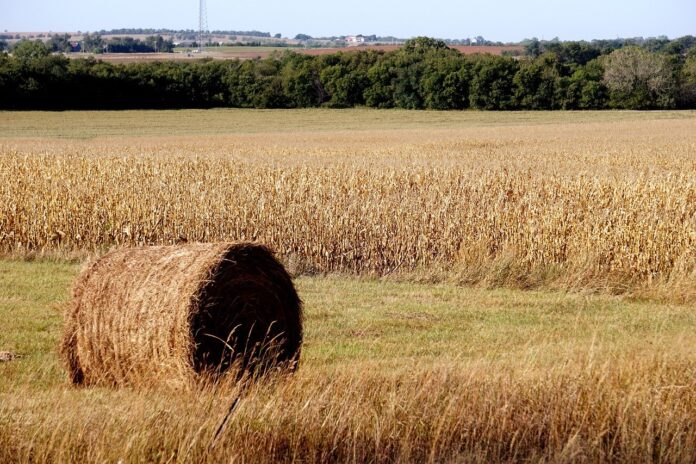The chaos that was Kansas between 1855 and 1858 had a tremendous impact upon the entire nation. The Whig Party disintegrated under the pressure of the slavery controversy, while the Democratic Party split into feuding sectional factions, and the Republican Party was born.
Politicians suddenly found themselves without political campgrounds. Political reputations were made and unmade when prominent national leaders paid the price of their inability to resolve the sectional disputes while facing challenges from rising young political men in the new lands of the western plains.
The nation seemed to be drifting off course, and human beings wondered about the fate of a nation, which had apparently lost control of its own destiny.
The “Bleeding Kansas Affair” was staged on the plains of the Kansas Territory but had its beginnings in the East. The proslavery interests were determined to have their way in Kansas regardless of the methods used.
When, the dark, curly-haired politician’s politician, Franklin Pierce, failed to rise to the leadership expected of a president, both sides, proslavery and anti-slavery, fought over the speakership of the House of Representatives, membership on the territorial committee of both Houses of Congress, and conducted a rancorous debate on the Kansas issue.
Crimes against Kansas
The Kansas issue reached a climax in Washington, D.C., May 19-20, 1856, when Sen. Charles Sumner of Massachusetts spoke for five hours from 112 printed pages on the “crimes against Kansas.”
Polished to a sheen, the oration denounced, among others, Andrew Butler of South Carolina in the most offensive language and charged the state of South Carolina with “shameful imbecility during the American Revolution.”
Southerners felt the sting of Sumner’s remarks. Preston Brooks, a freshman Congressman from South Carolina and relative of Butler, decided to take action.
A day after the Sumner speech, Brooks approached the senator from Massachusetts at his desk, upbraided him for his slanderous language and then beat him with a gutta-percha cane over his head until he fell to the floor stunned and bloodied.
The injuries inflicted were so serious that Sumner was unable to return to the Senate for three years, and his health was permanently impaired.
Lines drawn
Out on the plains, the Kansas Territory opened for settlement in 1854 and a contest began between groups supporting slavery (mainly from Missouri) and settlers from the Northeastern states who were Free-Soilers.
Since the Missourians were closest, they seized control of the territorial government and enacted a proslavery legislature. President Pierce and his successor, James Buchanan of Pennsylvania, accepted the proslavery Kansas Constitution and committed the Democratic Party to the admission of Kansas as a slave state.
The dominance of slave supporters soon dwindled as settlers from free states found their way into the territory. By September 1855, there were sufficient Free-Soilers in Kansas to enable them to repudiate the territorial legislature, organize a Free-Soil Party, and call for a constitutional convention to gather in Topeka.
In January 1856, Territorial Gov. Charles Robinson and a legislature were elected under a Free-Soiler Constitution. Kansas was now saddled with two governments — one supported by slavery and the Buchanan Administration and the other represented by anti-slavery sentiment and representing a majority of the people in the territory.
Although actual bloodshed was at a minimum in Kansas through 1855, the territory quickly came to symbolize the sectional dispute that was ambushing the nation.
In the spring and summer of 1856, violence became commonplace between the armed Free-Soilers and proslavery parties. In May, a large band of proslavery “border ruffians” from Missouri ignited the “Sack of Lawrence.”
Retaliation was forthcoming when the outraged abolitionist crusader, John Brown, his four sons and three others struck at Pottawatomie. They executed five proslavery settlers.
This was followed by Brown repelling an attack by proslavery men at Osawatomie in early August. Guerrilla warfare raged throughout the territory.
A temporary armistice was achieved by the arrival of federal troops in September and a new territorial governor, John W. Geary of Pennsylvania. Geary established “peace,” completed the presidential election in 1856, and submitted his letter of resignation.
Lecompton Constitution
President Buchanan appointed Robert J. Walker, a hard-nose true Democrat and former secretary of the treasury under President James K. Polk, to be the territorial governor and coerce Kansas into becoming a slave state.
Free-State men declined to participate in the framing and ratification of the Lecompton Constitution which guaranteed protection of slave property already in Kansas. Walker signed the pro-slavery Lecompton Constitution and sent it to the Buchanan government.
In the meantime, the Free-Soilers recaptured the territorial government and overwhelmingly defeated the Lecompton Constitution in a popular election of the Kansas citizens.
The Buchanan Administration chose not to view Kansas as a free state and instead continued to support the Lecompton Constitution. In March 1858, the Senate admitted Kansas to the Union as a slave state.
Public sentiment in the North opposed that constitution, and the House of Representatives, more responsive to public opinion, voided the Lecompton Constitution and sent it back to the Senate. The upper chamber rejected the lower house decision and gridlock existed.
Out of the impasse, a conference committee of the Congress ensued which proposed the English bill. This compromise proposed by Representative William Hayden English was designed to save the Buchanan Administration from utter embarrassment.
It stipulated that the Lecompton Constitution should be submitted to the people of Kansas once more. If it were approved, Kansas would be admitted and given a land grant; if it were rejected, statehood would await a population of 93,000.
The bill passed Congress in May and Kansas voters rejected the crude bribe in August. On Jan. 29, 1861, Kansas, the Sunflower State, at last, entered the Union as a free state numbered 34.
For Kansas, the storm was over with the public’s defeat of the Lecompton Constitution in August 1858. But for Stephen A. Douglas, who had parted company with Buchanan over popular sovereignty and was a traitor to the Democratic Party, the battle was about to begin.
Nineteen days after Kansas voted, the short man Douglas and the tall man Lincoln met to decide the choice of Illinois Republicans for Douglas’ seat in the Senate. The site was Ottawa, Illinois — the first of seven historic debates.
That’s your history!













